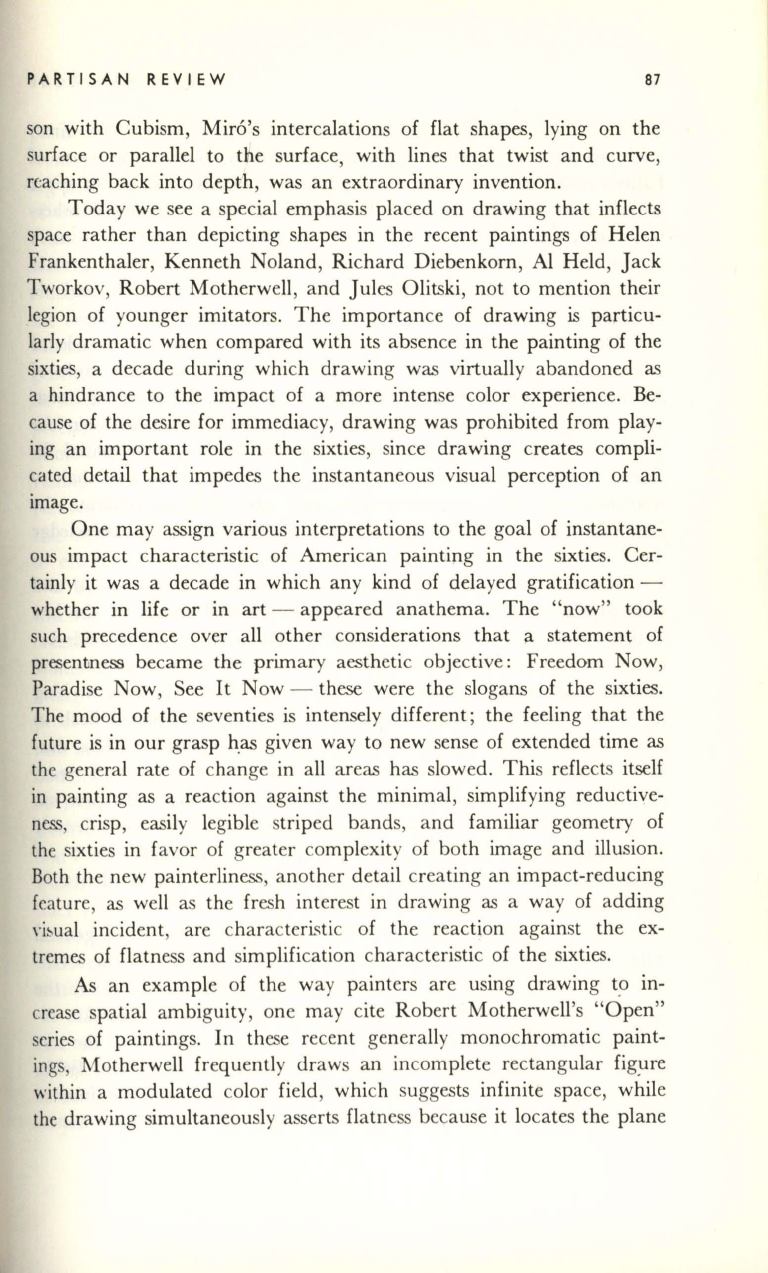
PARTISAN REVIEW
87
son with Cubism, Mira's intercalations of flat shapes, lying on the
surface or parallel to the surface, with lines that twist and curve,
r(;aching back into depth, was an extraordinary invention.
Today we see a special emphasis placed on drawing that inflects
space rather than depicting shapes in the recent paintings of Helen
Frankenthaler, Kenneth Noland , Richard Diebenkorn, Al Held, Jack
Tworkov, Robert Motherwell, and Jules Olitski, not to mention their
legion of younger imitators. The importance of drawing is particu–
larly dramatic when compared with its absence in the painting of the
sixties, a decade during which drawing was virtually abandoned as
a hindrance to the impact of a more intense color experience. Be–
cause of the desire for immediacy, drawing was prohibited from play–
ing an important role in the sixties, since drawing creates compli–
cated detail that impedes the instantaneous visual perception of an
Image.
One may assign various interpretations to the goal of instantane–
ous impact characteristic of American painting in the sixties. Cer–
tainly it was a decade in which any kind of delayed gratification–
whether in life or in art - appeared anathema. The "now" took
such precedence over all other considerations that a statement of
presentness became the primary aesthetic objective: Freedom Now,
Paradise Now, See
It
Now - these were the slogans of the sixties.
The mood of the seventies is intensely different ; the feeling that the
future is in our grasp h.as given way to new sense of extended time as
the general rate of change in all areas has slowed. This reflects itself
in painting as a reaction against the minimal, simplifying reductive–
ness,
crisp, easily legible striped bands, and familiar geometry of
the sixties in favor of greater complexity of both image and illusion.
Both the new painterliness, another detail creating an impact-reducing
feature, as well as the fresh interest in drawing as a way of adding
\·iwal incident, are
characteri..~tic
of the reaction against the ex–
tremes of flatness and simplification characteristic of the sixties.
As
an example of the way painters are using drawing t? in-
crease spatial ambiguity, one may cite Robert Motherwell's "Open"
cries of paintings. In these recent generally monochromatic paint–
ings, Motherwell frequently draws an incomplete rectangular fig!lre
within a modulated color field , which suggests infinite space, while
the drawing simultaneously asserts flatness because it locates the plane


